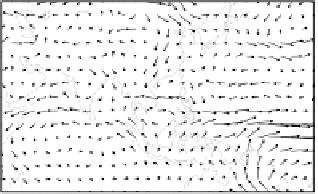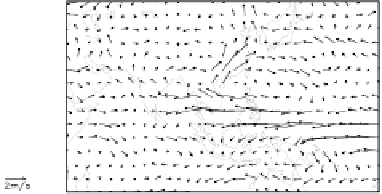Geoscience Reference
In-Depth Information
(a) (b)
Fig. 9. The composite anomalies at 850 hPa for positive (a) and negative (b) phase.
The positive phase features the anomalous cross-equator southerlies
from the eastern Indian Ocean to the western Pacific at 850 hPa (Fig. 9(a)).
Thus, the South Sea monsoon trough and ITCZ are enhanced. Anomalous
northerlies are found over East China. It indicates weaker East Asian
summer monsoon. The Indian southwest monsoon is also weaker. In the
year of negative phase (Fig. 9(b)), anomalous westerlies occupy over the
western Indian Ocean, which means the stronger southwest monsoon.
The anomalous southerlies over East China express the stronger East Asia
summer monsoon. The anomalous cross-equator northerlies lie from the
eastern Indian Ocean to the western Pacific. So the South Sea monsoon
trough and ITCZ are weakened.
5. Conclusion
ENSO and Indian dipole should be regarded as an air-sea coupled system
in the tropical Pacific and Indian Ocean. The Pacific-Indian Ocean
temperature anomaly mode is presented. Comparing SSTA in the Pacific
and Indian Ocean between the Pacific-Indian Ocean temperature anomaly
mode and ENSO mode, we find that the quasi-normal year of the PIM can
better reveal the quasi-normal feature of SST compared with that of ENSO
mode. The SSTAs are all near zero around the equator. The differences in
SSTA between the positive phases of the Pacific-Indian Ocean temperature
anomaly mode and ENSO mode are also clear. The Pacific-Indian Ocean
temperature anomaly mode can feature the east-west SSTA differences in
both the Pacific and the Indian Ocean. It indicates that the Pacific-Indian
Ocean temperature anomaly mode is different from the ENSO mode. The
influences of the Pacific-Indian Ocean temperature anomaly mode on the
precipitation and surface air temperature in China are very different from















